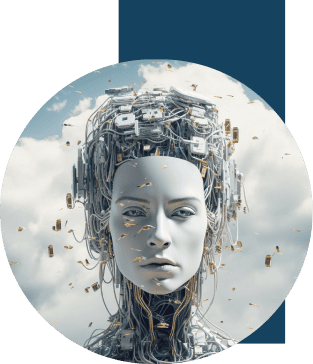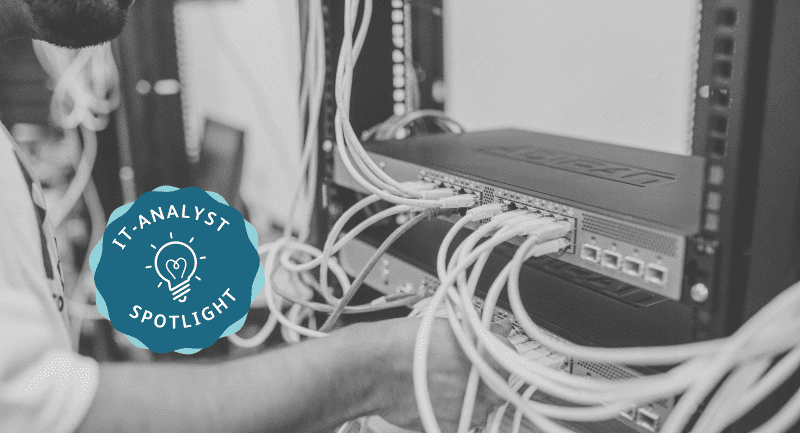
These are the most important IT trends in 2024 🚀
We at gridscale can look back on an eventful year. Our team has grown by many great people(We’re hiring!) and we have partnered with OVHcloud to roll out our cloud and edge solutions for businesses even faster and at scale. Meanwhile, everyone is talking about AI (ChatGPT) and the cloud. According to Bitkom, two thirds of Germans believe that ChatGPT will fundamentally change our lives. We reveal what else will be important in the most important IT trends in 2024. 🌍💡
1. democratization of generative AI
Large language models (LLMs), such as ChatGPT, Google Bard and Microsoft Bing or Copilot, will be part of everyday life for many knowledge workers in 2023. But how will the AI triumph affect companies? Generative AI (GenAI) is increasingly being democratized through pre-trained models, cloud computing and open source projects.
This development enables broader accessibility for employees worldwide. According to IT research company Gartner, over 80 percent of companies will use GenAI APIs and models in production environments by 2026 – a huge increase from just under five percent at the start of 2023.

2. AI-supported software development
AI will fundamentally change software development by increasing efficiency and relieving developers of repetitive tasks. This enables them to concentrate on more complex problems. With AI-assisted development, AI can automatically generate and optimize the code, for example, reducing the amount of manual coding required.
AI also contributes to troubleshooting and shortens the time it takes to correct errors. In quality assurance, it can automatically check code quality, detect anomalies and potential errors and help to generate test cases and improve test coverage. This leads to higher quality software in less time.
In addition, AI can be used in data preparation and analysis to automatically extract and cleanse data and put it into a format that is easy to process. It can also recognize patterns in data and make predictions, which is particularly advantageous in the development of machine learning applications.
3. augmented reality and the workforce
Have you ever heard of ACWF? Augmented-Connected Workforce (ACWF) combines augmented reality (AR) and connectivity technologies to revolutionize workplaces and production environments. The ACWF approach improves collaboration by overcoming geographical boundaries and enabling real-time interaction. AR is used, for example, for more effective (virtual) training and improved information absorption, while connectivity increases productivity through faster access to relevant data.
ACWF focuses on expanding human capabilities, not replacing them. Data protection and security are key aspects here, with a robust and secure cloud infrastructure forming the basis. Augmented-Connected Workforce is constantly adapting to new technology trends and represents a promising path for the future of work. If you would like to find out more, we recommend this white paper from the World Economic Forum (WEF).
4. continuous threat management
Another four letters: CTEM. Continuous Threat Exposure Management is an approach to cyber security that provides continuous monitoring and assessment of a company’s vulnerability to cyber threats in real time. By using advanced analytics, machine learning and AI, CTEM identifies potential vulnerabilities before they are exploited by hackers. This concept is particularly relevant as the digital transformation is expanding the attack surfaces for cyber attacks. CTEM enables companies to make proactive security decisions and minimize the impact of security incidents. This is essentially about scoping, discovery, prioritization, validation and mobilization to mitigate cyber risks.


5 Growing importance of Edge AI
Edge AI, a combination of edge computing and artificial intelligence, is also considered one of the key IT trends for 2024. This technology makes it possible to implement automation solutions comprehensively and thus marks a new era of digitalization. The strength of Edge AI is particularly evident in areas where unstructured information needs to be processed.
Companies already use large amounts of data for the production or provision of goods or services. Edge AI is now expanding the range of AI-based solutions for evaluating and processing this data. And directly at the point of origin, which leads to increased stability, availability and performance and reduces costs and latency times. The integration of cloud computing remains essential for training and improving AI models.
Edge AI therefore offers not only a technical, but also an economic basis for the automation and realization of data-based business models, making it a key element of the next stage of digitalization.
6. more and more platform engineering
Platform engineering is an advanced technology approach that accelerates the delivery of applications, creating real business value faster. It improves the developer experience through self-service features and automated infrastructure operation, enabling more efficient and productive development. This approach was developed in response to the complexity of modern software architectures and aims to facilitate collaboration between developers and operators.
By 2026, 80 percent of companies are expected to establish platform teams that offer reusable services and components. Platform engineering focuses on creating a user-friendly, productivity-enhancing platform that meets the needs of software developers while minimizing cognitive load. It is seen as a key topic in the DevOps community as it simplifies the development and maintenance of platforms.
7. industrial cloud platforms
According to one forecast, the use of industry cloud platforms will increase dramatically by 2027. More than 70 percent of companies will use so-called ICPs in the future. Industry Cloud Platforms are designed to support specific business outcomes in different industries. They achieve this by offering a combination of SaaS, PaaS and IaaS services integrated into a comprehensive product with orchestratable functions. These platforms typically offer an industry-specific data structure, a collection of bundled business functions, composition tools and other platform-related innovations. ICPs are customizable cloud solutions for specific industries and can be further adapted to a company’s specific requirements.
🎊 Happy New Year 2024!

More on the topic of edge computing
How edge computing is driving the energy transition
Predictive Maintenance: AI and Edge as a dynamic duo
Predictive Maintenance AI and Edge as a dynamic duo In today’s industrial landscape, optimizing quality…
How the provider landscape is reshaping itself around Public Edge Services
REWE as a German AWS? How the provider landscape is reshaping itself around Public Edge…




